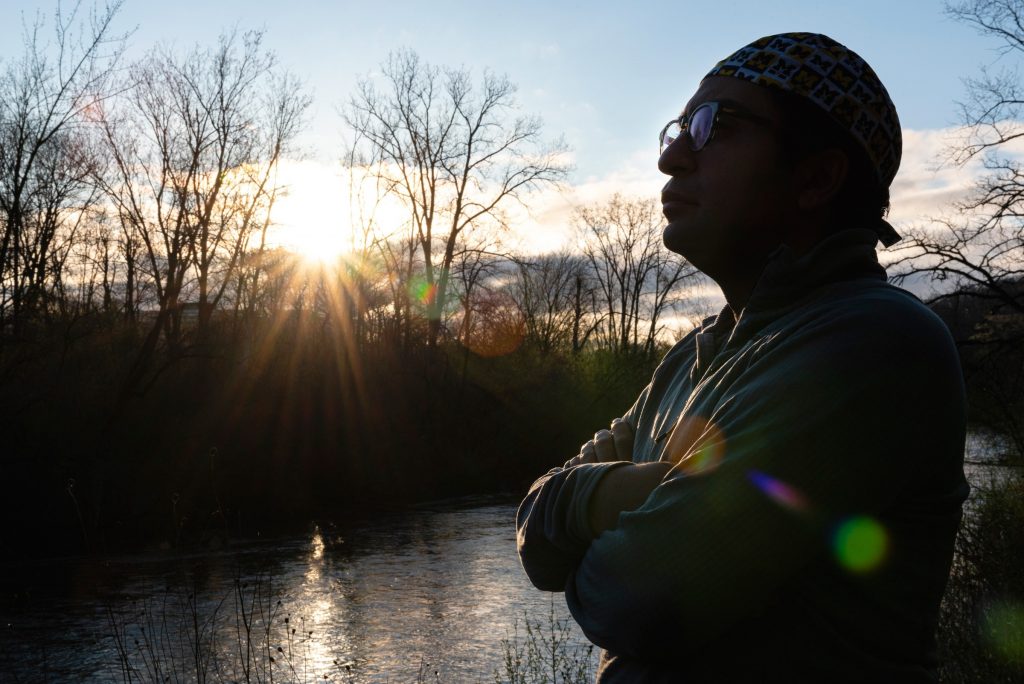
Andrew Ibrahim was just finishing his surgical residency in Michigan when the coronavirus surge hit. It took a lifetime’s lessons to face the challenge.
THERE IS NO hope of outrunning the suffering that has settled into the hospital and the world around it, so Andrew Ibrahim laces up his blue waterproof sneakers and walks. In the time it has taken the daffodils to poke through the loamy soil and dapple Ann Arbor with pale yellow blossoms—about as long as it has taken Covid-19 to kill some 4,000 people across Michigan and over 60,000 in the United States—Ibrahim, a seventh-year surgery resident at the University of Michigan’s hospital system, has gone from a semi-oblivious commuter to a connoisseur of suburban sanctuaries.
In the same short timespan, Ibrahim has also gone from surgeon in training to critical care doctor treating severely ill Covid patients in a pop-up ICU that he helped design in the university’s main hospital. He likens the metamorphosis to the tempering of an alloy: After the relentless pressure of a weeklong ICU rotation, he plunges into an off-week of rest. Toward the end of each cycle, he senses new flexibility and resilience within himself.
It takes a mile or two for Ibrahim to shake off the anxiety, to convince himself that he does not need to be anywhere and that no one needs him. As spring gets off to an icy start with squalls and snow, he has taken to rambling ever farther from home on his days off from the Covid ICU—5.8 miles one day, 7.7 the next.
He walks slowly, temporarily liberated from the stifling masks that he must wear at all times inside the hospital—a surgical mask handed to him by a security guard the moment he steps through the hospital doors, an N95 any time he enters a Covid patient’s room. He inhales the damp spring air deep into his lungs. For hours at a stretch, he follows the asphalt bike paths and muddy trails wherever they lead, discovering parks and ponds tucked away in neighborhoods he has driven through for years without ever knowing what treasures they hid.
Staring out at the dull reflection of an overcast sky on tea-stained water, Ibrahim considers the heft of the past decade—medical school, the grueling intensity of his surgical training now just three months shy of completion, a series of personal disappointments, and a family tragedy that nearly broke him. In his muddy blue shoes, with a few miles under his belt, Ibrahim feels steady, as if everything in his life has prepared him for this exact moment.
Back in the hospital, it’s a different story.
A MONTH ON the Covid treadmill has forced Ibrahim, 35, to reflect on his own mortality with violent clarity. The work has magnified his sense of moral and ethical responsibility and provoked dread that occasionally feels asphyxiating. He worries that he’ll order a test that exposes a nurse or respiratory therapist to the virus, that he’ll miss the exact instant when tweaking a medication dosage could save a patient’s life, that he’s taking years off his parents’ lives by making them worry.

Sheathed in protective gear that is supposed to keep droplets off his skin and aerosols out of his mouth and nose, Ibrahim still finds himself double- and triple-checking every step during routine procedures that he normally does by muscle memory. “It was weird,” he says of his first days adjusting to Covid. “There was just a different x-factor about this that slowed me down.”
Securing the catheter of a central line to a vein in a Covid patient, Ibrahim ties the knots on top of the groove just the way his surgery mentor Lena Napolitano showed him. Central lines, placed into major veins near the heart, are used to care for mechanically ventilated patients with severe respiratory distress because they allow for the infusion of numerous drugs essential to critical care. Some of those drugs—like norepinephrine—are delivered through a central line because they can cause damage if administered in smaller, peripheral veins.
Ibrahim reckons he has put in more than a hundred central lines, but even such relatively simple procedures can go awry and result in serious complications: a punctured lung, severe bleeding, even an embolism—a bubble of air that can flow through the line and up into the brain or down into the heart, potentially killing the patient. Ibrahim is hyper-aware of every minute detail. He has a list and he checks it, then checks it again. He has always been meticulous.
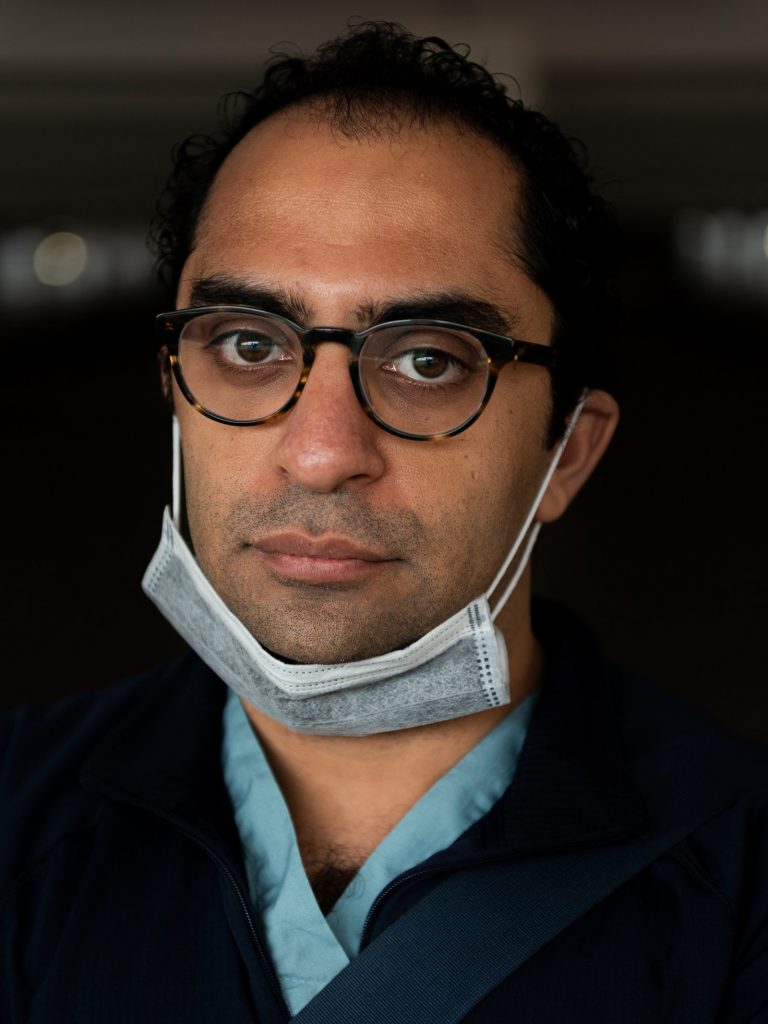
Now there is an entirely new moral dimension: In a Covid room, Ibrahim feels just as responsible for his team’s health and safety as he does for the patient’s. Tying in a central line, Ibrahim knows that the longer it stays secure, the more time he will buy for his team before they will have to suit up again to replace it. Lately, he is often alone during line procedures that would have involved an assistant before Covid. “In this environment,” Ibrahim says, “there’s definitely a very rich awareness that you are by yourself.”
In his nightmares, he is not alone. One dream: He’s Lying in an ICU bed, immobile. He watches as a squad of coworkers prepares to slide a silicon endotracheal tube into his mouth and down his throat. “Your lungs are tiring out,” someone says in a muffled voice. “You’re not going to be able to keep breathing on your own.”
The dream is relentless. His colleagues are dressed in blue hospital scrubs, bouffant caps, isolation gowns made of a yellow, paper-like tissue, and nitrile gloves, their faces obscured by N95 respirators and clear plastic face-shields reflecting harsh fluorescent light. The paralytic drug normally administered prior to intubation is clearly working, but the sedative is not. In the dream, Ibrahim is very much awake. His throat tightens as he thinks about the research papers he has read that place the odds of a Covid patient coming off the ventilator alive at about 50 percent. The team works by instinct and feel. Hardly a word passes between them.
Another of Ibrahim’s mentors, surgery chair Justin Dimick, hovers at the bedside. “I need you to look after my parents and I need you to look after my brother’s kids,” Ibrahim tells Dimick.
Then he lurches awake.
“There are people my age in the hospital on mechanical ventilators and there are clinical providers in the hospital who are on mechanical ventilators, so it’s not a huge stretch to imagine that,” Ibrahim says. “I think a lot of us have had that dream at least once.”
But it isn’t so much a reverie as an electrified memory, a role reversal enacted under the paralytic of sleep. As every one of Ibrahim’s colleagues knows, the reversal could become reality from one day to the next. They’ve seen it happen.
“WALKING OUT TODAY after our daily chair meeting, I ran into Andrew Ibrahim, who was walking in to work overnight in one of our newly opened ICUs,” writessurgery chair Justin Dimick in a tweet from April 2. A champion of surgical quality and former collegiate wrestler, Dimick is the mentor who features in Ibrahim’s recurring nightmare. “I wonder if the general public knows what it’s like to walk into work at 6 pm with this responsibility,” he writes.
I contacted the doctors to ask if they would be willing to tell me more about physician responsibility in the age of Covid. Over the course of several weeks, Ibrahim told me his story.
At Case Western Reserve University School of Medicine in his hometown of Cleveland, Ohio, Ibrahim was what is known as a “nontraditional student”—someone who goes into medicine after significant experience in another field. Accepted to Case Western’s medical school for the first time at age 20, after graduating early from the university’s undergraduate program, Ibrahim felt uncomfortably young and out of place as he shadowed doctors on a tour. In a meeting with the dean later that day, he admitted as much. “What would you do if you weren’t a doctor?” she asked. A bit too eagerly, Ibrahim replied, “I’d be an architect.” To his surprise, the dean encouraged him to defer admission for a year to indulge his interest. If he still felt called to medicine, his place at Case Western would still be available.
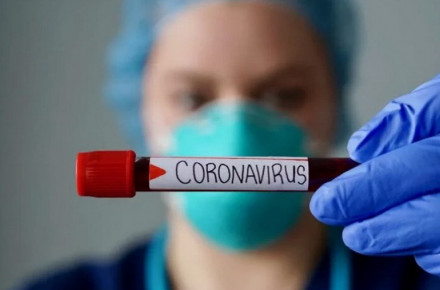
Ibrahim moved to London to train at the Bartlett School of Architecture. A year later, he returned to Case Western with a plan to fuse his dual passions into a cohesive whole. “Who are the architects and who can teach me about regional planning of health care, access to care, and how you design delivery systems?” he would ask his professors and classmates during his first year. “They would just start laughing,” Ibrahim recalls with a laugh of his own. “They would tell me, ‘We don’t have architects in the medical school. You’re interested in public health if that’s what you want to do.’”
Undeterred, Ibrahim plowed on through medical school. Between his third and fourth years, he took a gap year to complete a Doris Duke fellowship at Johns Hopkins University, in Baltimore, Maryland. It was there, studying provisions in the Affordable Care Act to address inequality, that he had his epiphany: “If we were going to improve the delivery of health care, it would mean redesigning the entire delivery system, physical infrastructure included,” he realized. “It was the first time my idea of architecture didn’t seem that crazy.”
Ibrahim’s older brother, Victor, a freshly minted physician, never thought his ideas were crazy. Victor had always been Ibrahim’s most ardent supporter, especially when Ibrahim’s confidence in himself flagged. The year Ibrahim spent in the Washington-Baltimore area was an opportunity to bond with Victor, who was 31 at the time, living in Arlington, Virginia, and practicing sports medicine.
Victor had grown into a man who seemed to Ibrahim almost supernatural in his abilities, like the Washington Nationals and D.C. United players he sometimes treated. On top of being a doctor, Victor was an avid runner, cooked elaborate meals, loved to sing, and even painted. Ibrahim idolized Victor. In the bedroom the boys shared growing up, Victor had only two rules for his little brother: “no snoring” and “ask anything.” Victor never tired of fielding the flurry of questions that would come from Andrew’s side of the room each night, making up imaginative and hilarious answers until the younger boy fell asleep. At one point, Victor even had Andrew convinced that he worked for Santa Claus.
The brothers looked alike and both wore glasses. Whenever a neighborhood kid would call Andrew “Little Vic,” Victor would say, “No, I’m Big Andy.” That always made Ibrahim feel good. Victor was the only one who was allowed to call him Andy. In a stroke of good timing, Ibrahim would be there for the birth of his brother’s first child in November 2011, a boy Victor and his wife, Ereni, named Luke. Dizzy with ideas and grateful for the family time, Ibrahim, then 27, returned to Cleveland to begin his final year of medical school.
That’s when he ran headlong into three seasons of grief. In the autumn of his final year, Ibrahim broke off his engagement to his first serious love. That winter, he failed his board examinations. In the spring, he failed to match into a surgery residency. “Match day” is the high point of a rigorous four-year journey, much more fraught with anticipation than graduation. It is the day when aspiring doctors find out where they will receive their advanced training. For applicants to surgery residencies, matching determines where they will spend the next five to seven years of their lives.
For Ibrahim, failing to match was as good as being told that he might not have a future in medicine. The exclusive fraternity of surgeons that he had been working so hard to join had told him that it did not want him. He found himself rudderless at what ought to have been a moment of triumph. “My god,” Ibrahim thought, “the world is over.” But what at first appeared to be a litany of biblical afflictions was only a glimpse of the devastation Ibrahim would come to know.
Ibrahim clawed back, gaining acceptance to a one-year provisional surgery residency at Case Western, what he describes as a “sink or swim” program in which every day feels like a job interview. He survived that first year and continued for two more in Cleveland before winning a Robert Wood Johnson scholarship to complete a master’s degree at the University of Michigan’s National Clinician Scholars Program, where Justin Dimick would serve as his adviser.
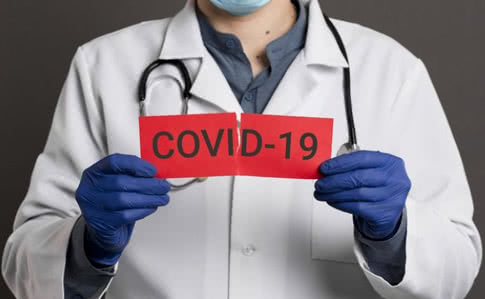
Ibrahim had met Dimick at a conference during his Doris Duke fellowship and the two had become close friends. Ibrahim was thrilled to be studying with Dimick, who had consoled him after he failed to match and whose support had never wavered. “He told me to keep my chin up and to remember that I had an important vision,” Ibrahim says, “to not give up on it even if the vision wasn’t totally clear.” Following two years of research, Ibrahim would finish his surgery training with Dimick at Michigan, a top-five program.
After so much disappointment, Ibrahim could finally say, “I got through that.”
WHEN COVID STRUCK, Ibrahim quickly found himself engaged on two fronts—medicine and design—often at the same time. He had continued to develop his architecture expertise over the years and now he was called upon to go beyond his normal duties to help Michigan Medicine (the university’s hospital system) handle the surge. To his surprise, he felt steady, even as Covid patients flooded the hospital and the pace of care became frenetic. As he had been trained to do by Dimick, Napolitano, and others, Ibrahim adjusted to the escalating pressure by leaning on protocols—what clinicians refer to as pathways. On a daily basis, Ibrahim helped modify those pathways for maximum infection prevention.
It was about 9 pm on the evening of March 31 when Ibrahim received an urgent summons. It came in an email from Hasan Alam, an acute care surgeon who, along with Dimick and Lena Napolitano, features prominently in Ibrahim’s pantheon of mentors. “We were holding manpower in reserve for a rainy day,” Alam wrote. “That time has come. In fact, it will be pouring buckets soon. This is what we have trained for. Let’s save some lives.” The email left Ibrahim shaking.
Alam asked Ibrahim to come to his office at 7 am on Wednesday, April 1, to help come up with a plan to turn floor 8D of University Hospital—normally a moderate care unit, equipped and staffed for patients who are too sick for general care but do not require intensive care—into a pop-up ICU. “See you in the morning Boss!” Ibrahim replied.
After consulting with Alam, Ibrahim set about organizing the 8D conversion. To get an idea of what they might need, he walked from University Hospital to the adjacent C.S. Mott Children’s Hospital to visit the Regional Infectious Containment Unit, or RICU, on the 12th floor. “I think that was the second ‘holy shit’ moment,” he says. (The first was Alam’s email.) Barely two weeks after Michigan Medicine admitted its first Covid patient, the RICU—built as a negative-pressure unit for 32 adult patients, to be activated in times of infectious disease emergencies—had already expanded capacity to accomodate 50.
The surge had only just begun at the end of March; now, it was April 1 and every bed in the expanded RICU was already full. “All of those patients were on mechanical ventilators,” Ibrahim says. “It underscored the gravity of the moment.” Ibrahim brought what he learned in the RICU back over to floor 8D in University Hospital. There, he and his colleagues, including critical care surgeon Pauline Park and surgery resident Ryan Howard, oversaw staff and maintenance crews as they scrambled to bring the floor as close to the standards of the RICU as possible.
Crews cut holes in the windows of rooms to install exhaust fans, which they connected to an external ventilation and filtration system that would continuously suck air outward, creating negative pressure. With visitation severely restricted, the 8D team was able to convert family waiting rooms into staging areas for medical teams.

To make sure staff would not have to doff PPE to make a resupply run in the middle of a procedure, they stocked “line carts” outside of the rooms with the essential items needed to put in central lines and arterial lines. Although every staff member had received in-person training on how to don and doff correctly, they still huddled around a computer and watched a training video over and over again.
In addition to the nuts and bolts retrofitting, Ibrahim and his colleagues adapted RICU protocols to 8D. They created a pager system to facilitate communication with pharmacists, nutritionists, and physical therapists to minimize personal contact. Adopting a staffing model from Covid-ravaged Lombardy, Italy, the hospital system had already switched to a week-on, week-off rotation for doctors and physician assistants in ICUs to prevent burnout and to avoid exposing the entire critical workforce at any one time.
Before 8D’s first Covid patient arrived, Park made sure everyone on the floor was briefed on Michigan Medicine’s new Covid safety protocols, which included bundling tasks—like line procedures, ventilator adjustments, and blood draws—and using runners to minimize in-room time.
As patients began arriving and fatigue set in, Ibrahim and his colleagues made a habit of personally checking in on the person they were taking over from when they began a shift. “Holding up OK?” they would ask each other. “Do you need anything?” Ibrahim encouraged everyone to build something into their routine that would help them decompress. For Ibrahim, it was “post-shift ice cream breakfast,” preferably double chocolate brownie, followed by taking time to watch the sunrise on the way to his car.
Over the next week, the hospital would admit more than 120 Covid patients, exceeding the capacity of the permanent ICUs. In those same 7 days, the 20-bed makeshift ICU Ibrahim helped rush into operation on 8D would go from concept to full capacity.
FOUR YEARS EARLIER, in the summer of 2016, Ibrahim had settled into Ann Arbor and was halfway through his research fellowship when Victor called to tell him that he was going into rehab. He had been wrestling an addiction problem and had been hospitalized after a trip to the emergency room.
The news blindsided Ibrahim. “You look up to your brother, he’s your total rock, your sage person for advice and wisdom,” Ibrahim tells me. It was Victor who showed Ibrahim how to excel on the soccer field and in school, who forged the way to medical school, who showed him how to hit the bullseye of every metric of success in his academic and professional path. It was also Victor who believed from the very beginning in Ibrahim’s dream of being a surgeon-architect and building a movement that he would one day call “Health in All Design.” Victor’s support fueled Ibrahim’s ambition and gave him courage to confront the naysayers.
Ibrahim had always admired Victor’s selflessness and generosity, and now it was time for Ibrahim to give something back to his brother. Since he was in the research phase of his residency, Ibrahim was able to make frequent trips to visit Victor as he moved between rehab facilities, into a group home, and, eventually, an apartment of his own in Arlington. From the outside, the trips looked like the usual travel to give talks or attend conferences. In actuality, they often coincided with Victor’s relapses.
Ibrahim tried to support Victor through the highs and lows, to pick him up after relapses, and to simply keep him company wherever he was living. Throughout the rehab saga, Ibrahim felt like he was growing closer to Victor, that he was finally seeing a fragile part of his brother that had been hidden from him until Victor did not have the strength to hide it anymore. “In rehab, you go on long walks and speak plainly about hard topics,” Ibrahim tells me. “I learned a whole new side of him. Honestly, it made me love him even more.”
His hero had become human, and Ibrahim could see how the pressures of Victor’s life had worn him down. “This is a guy who figured out and outsmarted so many things. He could do it all,” Ibrahim says. “And when addiction hit him, he tried to keep up and figure that out, too, and just couldn’t. It’s the first thing that stumped him.”
A memory stands out in Ibrahim’s mind of Victor cooking him breakfast in the kitchen of a group home, showing hospitality in the way that was available to him. However humble the setting, the breakfast was magnificent. Victor made pancakes and omelettes and served them with fresh fruit and gourmet coffee. “He was excited to have me,” Ibrahim says. “Good breakfast in a group home didn’t seem weird and wasn’t a stretch for him.” This side of Victor, pulling out all the stops to make his brother feel special when he was the one in need of help, was the one that Ibrahim cherished most.
“He was selfless to a fault, always giving,” Ibrahim says. He worried that Victor had given so much that he had nothing left for himself. “I remember talking to him, and I was like, ‘If medicine is too stressful for you, or you don’t like the way your job’s going, you don’t have to do that. You can do whatever you want,’” Ibrahim says. “There’s a lot of ways to do life that aren’t like the cookbook, and it works out fine.”
By the spring of 2018, Victor appeared to have turned a corner in his hard journey through recovery. He was living on his own in an apartment in Arlington, looking healthy, with close-cropped hair and a few streaks of gray in his handsome black beard. He was making preparations to return to work and enjoying time with his children. Ibrahim, now 33 and back into his surgery training, allowed himself to hope that Victor had beaten the disease of addiction for good.

“We had a number of heart-to-hearts,” Ibrahim says, “and I thought we were mostly on the same page.” In a selfie taken by Ibrahim on the balcony of Victor’s apartment in Arlington, the brothers are beaming. Victor, wearing black-rimmed glasses and a gray v-neck t-shirt, clutches his sons Luke and Noah to his hips. A snippet of his laughter survives in the second-long snapshot.
Ibrahim told Victor that he was awed by his recovery, that not everyone could bounce back the way he had. Whatever Victor did with his life in the future, Ibrahim told him, it didn’t matter as long as he was happy. “It just makes me so proud to be your brother,” Ibrahim told Victor on a visit in July 2018. “They were the last words I ever said to him.”
A month later, on a cool day in late August, Victor stopped answering his phone. Throughout the day, his family members called but he did not pick up. Ibrahim tried once more at about 2:30 pm before he was scheduled to go into the OR to do a kidney transplant. When Victor didn’t answer, Ibrahim asked another resident to cover for him. “I just had a feeling,” Ibrahim says.
Victor Mounir Ibrahim, 38, was found dead that evening in his apartment, having succumbed to his disease. In Ibrahim’s recurring nightmare, it is Victor’s sons he is asking Dimick to care for.
STARTING WITH HIS meeting with Hasan Alam at 7 am, Ibrahim spent all of Wednesday, April 1, helping to prepare 8D for Covid patients. Then he volunteered to roll right into a 12-hour night shift. That night, the unit received its first trial run of two Covid patients, who were both stable but still on high ventilator settings and drip medications. By that point—based on the experiences of doctors in other parts of the hospital and dispatches from around the world, including 30 miles east in Detroit—everyone on 8D knew about the potential for Covid patients to deteriorate almost instantaneously.
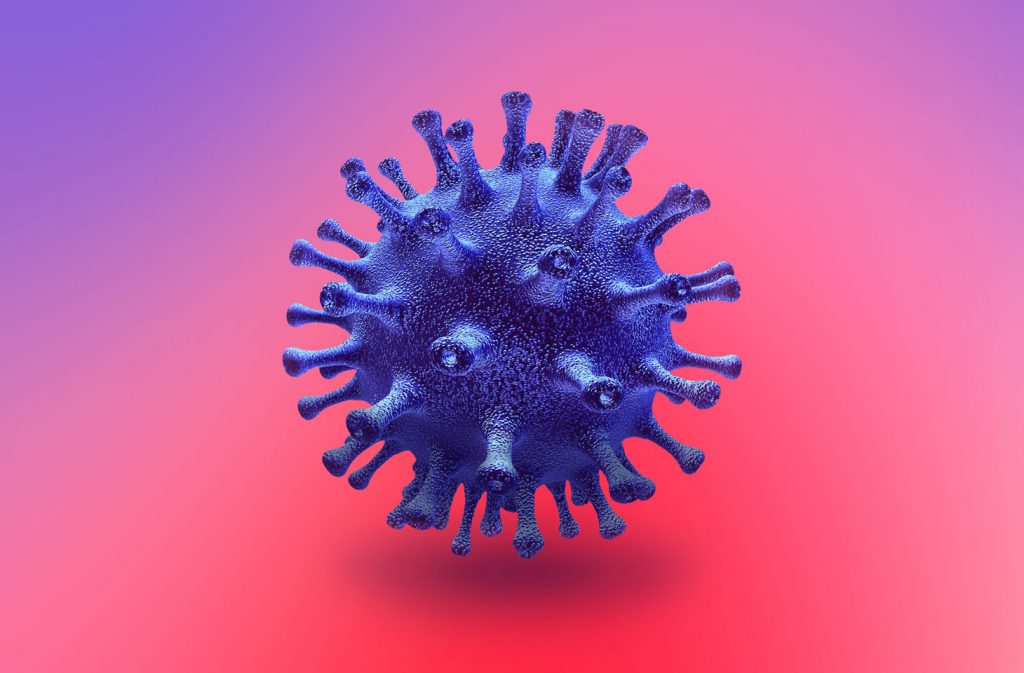
There’s two patients,” Ibrahim said when he signed out to the day team in the morning, “it could scale up at any point.”
It was the next night, April 2, when Dimick crossed paths with Ibrahim, who was on his way into the hospital for another 12-hour shift. That was the exchange that left a deep impression on the more experienced surgeon and prompted him to ask on Twitter if the public understood the responsibility Ibrahim was shouldering. Ibrahim and Dimick had been friends for a long time. Now they were peers. “It’s time to step up, not step back,” Dimick told Ibrahim, sensing the heavy burden they now shared.
Ibrahim’s shift started off quietly. One or two Covid patients arrived on 8D in the first few hours, but the recently formed pop-up unit was still waiting for the surge that had already engulfed the RICU and the hospital systems’ official ICUs. A current of anxiety flowed beneath the stillness on 8D.
Everyone knew what was coming, even if most of them had not seen it firsthand. Loaded to the brim with news imagery from Italy, Spain, New York, and Detroit, and with a mix of desperate and somber social media posts from their fellow hospital workers—some of whom worked in the same building—their imaginations filled in the blank canvas of the unknown. They knew that when the enemy came, it would be invisible and it would be everywhere. Like trench soldiers waiting for the whistle, they leaned into their own private fears. They coped in their own private ways, too. Ibrahim tried to carve out a space of calm within himself. “I’m sitting there,” he says, “having this moment of like, all right, take a deep breath, things are going to be OK.”
At some point in the night, Ibrahim went down to check on his colleagues in another unit that had also expanded to take on Covid patients. He watched as two colleagues got a page at the same time telling them to prepare their teams to receive a new patient. At first, they were confused, thinking it was a duplicate page, but it wasn’t—each of them had a patient on the way. “It was just a steady flow,” Ibrahim says, “and I think after the third or fourth one, I was like, ’All right, I’m just gonna park here for the rest of the night because it was clearly where the action was and where things needed to happen.”
Ibrahim was there to help shock one patient’s heart back into rhythm while the patient in the next room went into cardiac arrest at the same time. “There was no rest,” he says. “You know, you think everything’s fine, and in just a moment, everything tipped.” It was his first dose of the new reality. “You’re vigilant. You’re watching, you’re waiting,” he says, “and you may go a whole night where the patients are just fine—and then at a moment it could drop very quickly into chaos.
“I remember there was one patient in one of the ICUs who they wanted to bring to my new expansion,” Ibrahim says. He decided to visit the other floor to get an assessment of the patient. “He was super young, close to my age, I think. They said, ‘Yeah, he’s our healthiest one in the unit. So he would be a good person to come out to your unit,’” Ibrahim tells me. “I said, ‘Sure it’s fine. We’re happy to do it,’ and literally when they unlocked the bed to start moving him out of the room, he immediately deteriorated. His oxygen levels plummeted, his blood pressure got low, and I was like, ‘Damn, that’s tenuous.’”
The lesson resonated: As stable as a Covid patient might appear, they could drop off a cliff without warning. “I started talking to some of the gray-haired people in the unit who’d worked through H1N1,” Ibrahim says, referring to the 2009 influenza epidemic that came to be known as swine flu. “This is the clinical entity,” they told him, warning that what they were seeing reminded them of the severity of respiratory distress they saw in H1N1 patients a decade ago.
“Settle in buddy,” Ibrahim says they told him, “because this is what it’s going to be like.”
Exploring the dirt pathways of north Ann Arbor on his days off, Ibrahim was able to restore himself for the week to come. This, too, was a product of his experience, but it was not something he learned in school or in his residency—it was a lesson learned while coping with the loss of his brother. “Bouncing back from that, I just found this whole new resilience,” Ibrahim says. “I think those life moments inadvertently conditioned me to be in this role.”

FROM THE DAY that Victor went into rehab, his struggle sent Ibrahim into a tailspin. He’d been hustling after Victor’s footprints for so many years, and now the shadow of his brother’s addiction was darkening the path. Despite his “trilogy of failures,” as he calls them, Ibrahim had lived a mostly charmed life until then, and his successes had put him in the most elite academic and professional tiers of medicine. He did not doubt that he could continue racking up accomplishments, but he began to wonder: “Am I putting myself on some kind of hamster wheel, chasing things that I shouldn’t be going after? Am I trying to be too ambitious?”
He thought about all the doctors over the years who told him there was no such thing as a surgeon-architect and the architecture hotshots who condescended to him because he was more interested in hospitals—and the people they serve—than skyscrapers. Then he thought about Victor, trying to imagine what his older brother would want for him. He also thought about Dimick, who had become an even closer confidant after Victor’s death. After his parents, Mounir and Nagwa, Dimick was the first person Ibrahim called when he found out about Victor. “Failure is the crucible of great leaders,” Dimick had told Ibrahim way back when he failed to match. “I remember that very vividly,” Ibrahim says.
Ibrahim’s grief was still a raw wound, but he began to understand Victor’s story as one of selflessness and zeal for life in which his struggle with addiction is not the most significant chapter. As for the tragic finale, he views it with a physician’s clinical distance: “It just underscores how mad of a problem addiction is,” he says. “It’s a testament to how bad a disease it can be.”
“After I came out of my cave,” Ibrahim says, “I was kind of like: fuck it, I’m just gonna do it. I’ve already seen what happens when you try to do all the things you think you’re supposed to do, instead of just doing the things that you think are the right things to do.” By then, he was already well on his way.
In April 2018, four months before Victor’s death, Ibrahim had been named chief medical officer of the health-care division at HOK, one of the 10 largest architecture firms in the world. Hospitals and health-care projects comprise about 25 percent of HOK’s portfolio, he says, but the firm also turns to Ibrahim for ideas about how to weave health into projects that are not directly health-focused, from stadiums to skyscrapers.
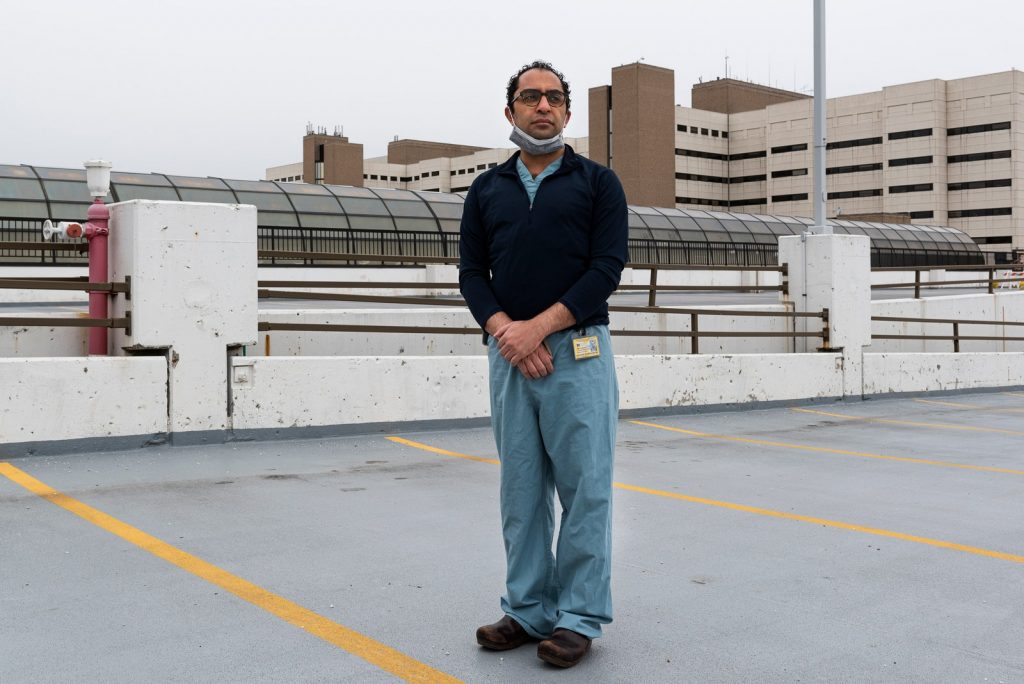
When he finishes his surgery residency in July, Ibrahim will begin dual appointments in the school of architecture and the surgery faculty at the University of Michigan. He will teach a course at the architecture school called Health in All Design and oversee a two-year health and design fellowship for one master’s student per year to study the topic in depth.
At last, Ibrahim is the surgeon-architect that Victor always believed he could become.
AS IBRAHIM AND his colleagues adjusted to the breakneck cadence on 8D, they reminded each other constantly of a hard-won lesson from the Ebola crisis: For the caregiver, there is no emergency in a pandemic. “Basically, even if a patient is tanking, you’re in a pandemic—your priority is still you, and you can’t just run into a room,” he says. “You’ve got to put on all the appropriate equipment, and if that takes you two minutes, and that patient dies in those two minutes, you still need to take those two minutes, because if you go in there and get infected and something happens to you, that is a detriment to multiple people who might not get care.”
The unity of purpose and shared risk of exposure has intensified the camaraderie among frontline hospital workers at Michigan Medicine, some of whom have volunteered to “redeploy” to ICUs or to step out of their normal fields of expertise to serve in Covid units. On April 19, Ibrahim was surprised to find a friend who is a plastic surgery resident covering a night shift in another pop-up ICU. Ibrahim asked how he had wound up covering nights in an ICU. “Are you secretly in love with intensive care?” Ibrahim joked.
His friend told him that an email had gone out to his program asking for volunteers to cover night shifts in the Covid ICUs for a week. “I couldn’t stomach seeing any of my other classmates doing it. I didn’t want anything to happen to them. So I volunteered first,” the plastics resident said. “Stops you in your tracks a bit,” Ibrahim says. Over the weeks since Covid took over the hospital, Ibrahim has marveled at these acts of volunteerism and at the focus of his colleagues as they share tactics and study each others’ techniques, adapting by the hour and sometimes by the minute to the unfamiliar terrain they are scrambling to master.
The threshold of risk in the decisionmaking process, which normally only applies to the patient, now extends to the entire care team of nurses, respiratory therapists, physicians assistants, and cleaning personnel. Now, Ibrahim and his colleagues scrutinize the most basic care decisions, like requesting a blood draw, subjecting them to a risk-benefit analysis that weighs patient safety against personnel safety.
Normally, Ibrahim would not hesitate to ask for an arterial blood gas test, or ABG, which yields critical data, including oxygen concentration, pH, electrolyte, and potassium levels. In combination with waveforms on monitors by the patient’s head that indicate heart rate, pulse-oxygen level, and blood pressure, the ABG data enable physicians to fine-tune drug dosages and ventilation settings and other critical care decisions, like whether to turn a patient over onto their belly to increase their lung capacity, called proning. With acutely ill respiratory-distress patients, a subtle change in ventilator settings or meds can make a lifesaving difference. The more up-to-the-second the data, the more precise the decisionmaking; the more precise the decisionmaking, the more likely the patient will come off the ventilator alive.
The problem, under Covid conditions, is that a simple ABG request unleashes a chain of potential exposures. Drawing an ABG requires a nurse to enter the patient’s room to pull blood from an arterial line. Exposure one. Depending on the results from the ABG, a doctor might ask the respiratory therapist to adjust the vent settings. Exposure two. Looking at the ABG results and the waveforms, the doctor might ask a nurse to increase the dose of blood pressure drugs or other meds. Exposure three. Once those adjustments are made, the team has to follow up to see what effect they’ve had, which means drawing another ABG, usually an hour later, which may trigger another adjustment of vent settings and meds. Exposures four, five, six.
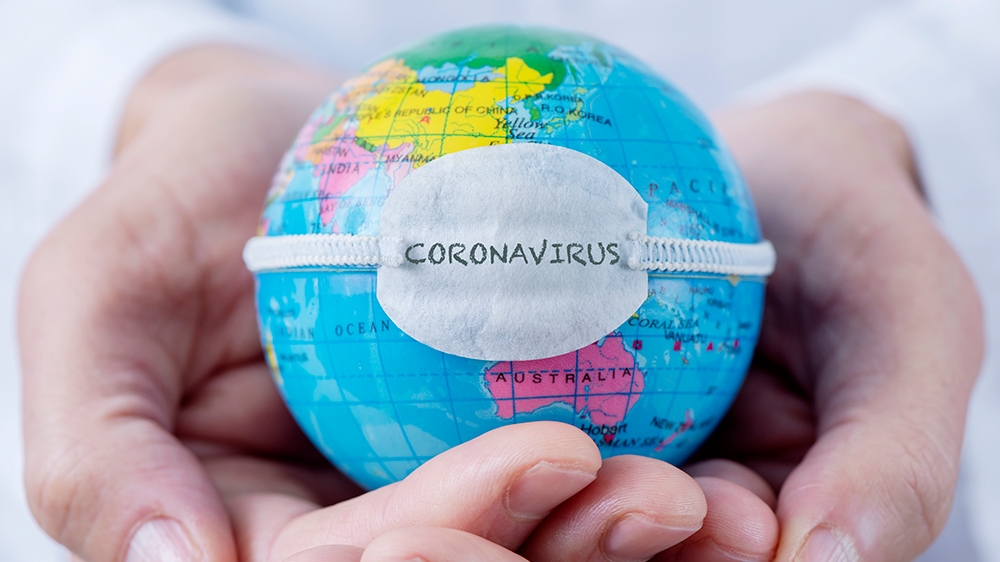
Ibrahim tries to stretch these requests down to the wire. “It makes you a little gun-shy,” he says. “Can I put the dose a little bit higher and stretch it out to every four hours so that I can keep that nurse out of the room just one more time?” he asks himself. “You think twice. It’s not just checking the labs; it’s putting someone at risk to go in the room to go check the labs.”
Proning a patient puts a lot of bodies in the room—five for a normal adult at Michigan Medicine and more if the patient is severely obese. When successful, proning has been proven to ease the symptoms of respiratory distress. But if proning goes wrong—which happens sometimes with patients who are unconscious and attached to a ventilation tube and numerous other IV drips and wires—it can lead to accidental extubation, causing an eruption of aerosolized virus and leaving the patient without an established airway. “Your threshold of certainty for any procedure or decision has to be higher,” Ibrahim says. “It can’t be ‘This might work.’ It has to be ‘They definitely need this, and we definitely need to do it.’”
A sensor connected to the arterial line generates the waveforms that are so critical to the second-to-second decisionmaking in respiratory-distress care, but the signal can weaken over time if clots form in the catheter or the arterial tissue that the line is sutured into degrades. When the lines need to be swapped, the normally craggy and sharp waveforms will start to appear blunt. Like drawing blood, replacing an arterial line requires at least one person to gear up and go into the room—in this case, Ibrahim or another surgeon—which means that he has to weigh his own risk when deciding whether to replace an arterial line. He watches the waveforms obsessively, delaying line replacement until the precise moment that the waveform starts to blunt. In pre-Covid times, he would usually have a nurse assisting him. Now he goes in alone.
With the latest printouts from the respiratory therapist in his hands—2 inches wide and 8 inches long, like cash register receipts—Ibrahim often stands for long stretches outside of a patient’s room, fixated on the monitors inside, looking back down at the data, running the numbers in his head, ready to pounce. “You’re just staring at a monitor. Nursing will come by and say, ‘Do you need anything?’ You’re just staring almost in a sense of, ‘What else can I do? Should I be doing something? Should something be different? Am I missing something?’” he says. “Just total vigilance.”
WHEN HE IS not working at the hospital, or walking off the stress, Ibrahim is likely to be on the phone with his colleagues at HOK, gaming out strategies for how to rapidly expand the critical care capacity of hospitals around the world and how to convert nonhospital infrastructure like hotels, athletic facilities, and schools into emergency care facilities.
In one recent 24-hour period, Ibrahim talked with hospital leaders in Italy, California, New York, and London, consulting on whether to convert existing hospital space into negative-pressure isolation units or to assemble military-style tent hospitals, how to triage financial resources in a time of plunging revenues, and how to prepare for the infrastructural demands of Covid care while simultaneously keeping enough hospital space open for the equally pressing care needs of non-Covid patients.
These consultations are an important proof of concept for Ibrahim. He is able to apply “health in all design” to real-time crisis planning, contributing fresh lessons from his direct experience with Covid patients and the pop-up ICU on 8D. One frequent topic is what Ibrahim calls “universal rooms”—regular patient rooms, or even rooms in nonmedical facilities like hotels and schools, that could be immediately switched to contagion containment ICU rooms in an emergency. As exciting as these calls are, they are also sobering: The leaders he talks to are planning for a crisis that could last for years, and the decisions they make will inevitably help some at the expense of others.
It gave Ibrahim pause to hear an Italian surgeon say his community was banding together to build a new Covid hospital. “It occurred to me that if architects and designers start making recommendations that may be the right answer for pandemic preparedness, it may also mean that next year, schools don’t get funded as much or roads don’t get repaired,” he says. “You’ve got to think about the collateral damage of saying everybody needs a pandemic hospital.”
Brainstorming pandemic responses has been almost as draining for Ibrahim as working in a Covid unit. His mind reels with questions about systemic inequality that have preoccupied him for years. “All of a sudden, when you’re talking about why certain parts of the country have higher death rates than others, you start thinking about things like structural racism, access to care, transportation, housing, and insurance,” he says. “You realize that your ability to think about architecture and design of a health-care facility in a pandemic has deeper reverberations, well beyond the next couple months. In a sense, the way you’re designing and building and answering those questions is also your way of commenting on what that we value and what we see as problems in those places.”
Helping to make these decisions, Ibrahim says, feels just as intense as being in a patient’s room, trying to put in a line, making sure he sutures it perfectly so that it won’t come out. “It just feels like an enormous burden to make sure we get it right,” he says.
IT HAD BEEN almost three weeks since the Covid dam broke and flooded Ibrahim’s ICU, and he thought maybe he was settling into a rhythm—no longer treading water, but actually swimming. On April 19, the statistical reality that, yes, it could happen to him, slammed home. “I’m back in the hospital tonight,” he writes in a text message that kicked off a harrowing thread.
“A lady I admitted two weeks ago, around my age, also a health-care worker. When I last saw her she was doing better,” he writes. He had last seen her on the final night of his previous weeklong rotation. Back now after a week’s rest, Ibrahim found her room vacated, an empty chair stationed outside the door. “She just got crashed onto ECMO and isn’t doing well,” he writes. In what had become a well-known trend, another Covid patient—already hospitalized for over a week—had gone from relatively stable to near death with frightening speed.

“It’s crushing,” Ibrahim writes in his text thread. “Because we worked so hard on her admit”—meaning, when she was first admitted to 8D—“and she was one bit of good news as she improved. But now, she could be any one of us.”
As the woman’s condition grew dangerously acute, the hospital made the decision to put her on extracorporeal membrane oxygenation, or ECMO—the mother of all pulmonary life support. Unlike a ventilator, an ECMO machine can do all of the work of respiration without forcing potentially harmful positive air pressure into the lungs. Perfected at the University of Michigan in the 1980s by surgeon and critical care expert Robert Bartlett, and similar to the heart-lung bypass machines used in heart surgeries, ECMO is capable of keeping a person with zero respiratory function alive.
Under the direction of an ECMO specialist and operated by a highly trained ICU team—in this case, Lena Napolitano and her team in the Surgical ICU on floor 5D—an ECMO machine pumps blood out of a patient’s body through sterile tubing, adds oxygen and filters out CO2, then rewarms the blood to body temperature and pumps it back into the body in a constant flow. If necessary, the lungs can remain totally still on ECMO, giving them a last-ditch chance to rest and heal. ECMO treatment is extremely intensive, and capacity is limited at every institution in the country, including Michigan Medicine. So in the time of Covid, only the sickest young patients are eligible. For Ibrahim’s patient, ECMO would be her final hope.
By around 2 am on April 19, the woman’s care team on 8D had been working furiously to stabilize her for several hours. At that point, the SICU team on 5D still had not made the call to put the woman on ECMO, and the team on 8D feared they had exhausted every lifesaving measure available to them. The woman was dying, and this meant that she could finally have a visitor.
Meredith Barrett, a transplant surgeon who had volunteered to cover the 8D ICU that night, called the woman’s father up to the floor. When he arrived, the team offered to give him an N95 mask, but they explained that since the mask was not fit-tested, there was no guarantee of a perfect seal. Above the surgical mask that the father was wearing when he arrived, Barrett saw terror in his eyes.
“He was so scared, and it wasn’t just fear of his daughter dying,” Barrett recalls. “It was fear of being in the hospital environment,” she says. “He was scared to be in the Covid hot zone.”
The 8D team brought a chair for him and placed it just outside her door. As she lay dying a few feet away, the man kept his vigil. Through a large plateglass window, the man peered in on his child, clinging to life by tubes and wires growing off of her like vines. Every now and then he would put his hand up to the glass. For Barrett, the scene was devastating. It was impossible not to imagine her own father looking in on her, and she ached to comfort the man. The mask over her own face felt like a muzzle, stripping her of the ability to express the depth of her sympathy. “I hurt so badly for this man,” she says, “I wanted to pull my mask down and say I’m so sorry, but I couldn’t.”
As the SICU team prepared to transfer his daughter down to 5D to begin ECMO, the man decided to leave. But his chair remained. Barrett took a photo and posted it on Instagram. “When your patient is dying but their father is scared if he goes in the room he might get the virus or bring it home, a chair outside the room is a devastatingly sad best option,” Barrett writes in the caption. “This man had the right to be with his dying child. This virus took that from him.”
When Ibrahim came back on shift, he was profoundly moved by the sight of the empty chair and the story he heard from colleagues who had cared for the woman, who had been his patient on admission and during her first days on 8D. Then, she had seemed like she might be one of the lucky ones. Now, she was down in the SICU with all of her blood circulating in and out of her body through a pair of silicon tubes tied into her veins and connected to a machine. In a sense, this made her one of the lucky ones too. If anyone could bring the woman back from the edge of death, it would be Napolitano and her team. They had done it countless times before.
Still, doubt creeps in. “You think about all the things you did to help that person, and it’s inevitable that you will start to second-guess your decisionmaking,” he says. “You start having these moments of crisis of confidence, like, ‘Did I make a bad decision three days ago? Is there something I missed, and that’s why this person got worse?’”
Like Barrett, Ibrahim cannot resist filling in the blanks where a father once sat watching his daughter die, where a daughter lay unable to seek comfort in her father’s touch. He flashes on his own nightmare where his own lips sprout the endotracheal tube. A dressing covers the spot beneath his clavicle where a central line pierces his skin. He sees the abstract forms of his own heart rate and his own blood pressure dancing across a monitor the size of a laptop screen. He watches the waveforms for the first sign of bluntness, scrutinizes the blood data on the printout in his hand. At his side, his parents sit slumped in their chairs, their faces weary with fatigue. Feeling his throat constrict, he thinks, This is not how it should be. It should not have to be like this.
“Everyone who’s on the front lines is at least a little bit scared,” Ibrahim tells me, “and if they say they’re not, they’re probably lying.”
As of the end of April, almost 300 of some 1,800 Michigan Medicine employees tested for Covid have been positive.
LAYERED ON TOP of the stress and fear that go with providing care, the aberrations to normal life that frontline hospital workers like Ibrahim are experiencing are excruciating. Isolation from friends outside of work, the impossibility of seeking comfort in simple forms of affection, like hugs, and the inability to console patients’ families or seek consolation from their own loved ones for fear of infecting them or being infected—these are not mere discomforts, but sources of real pain.
Their essential work places them at significantly higher risk of infection while exposing the parts of them that cannot be covered with PPE to the full force of Covid-related emotional, psychological, and moral trauma. The suicide on April 26 of New York City ER doctor Lorna Breen—who had only recently returned to work after recovering from Covid—is a foreshadowing of the toll of practicing medicine in a time of crisis. In this regard, the often facile war analogies applied to Covid truly ring home.
And it’s a small step from seeing health care workers as soldiers in a war to calling them heroes. But to insist that health care workers live up to the standards of heroism is to add a few stones to the heavy load they are already carrying for us. It is a load each of them carries on top of all the usual baggage that accumulates over the course of a life.
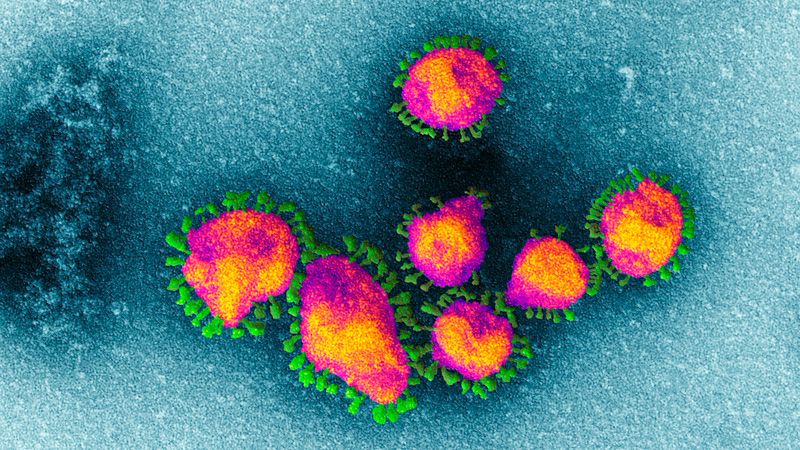
In Ibrahim’s case, added to the twin pressures of Covid care and his architecture work, he worries that his parents, Mounir, 73, and Nagwa, 68, who still live in the house in Cleveland where he grew up, are having to cope with the stress of social distancing while simultaneously dealing with the absence of their children and grandchildren at a time when they are still trembling on the jagged edge of grief. They want to come to Ann Arbor to assist their son in this time of hardship, to cook for him and run errands for him. Ibrahim has had to tell them to stay away, and this breaks his heart.
In the early weeks of the outbreak—when Ibrahim felt an expert’s foreboding about the severity of the pandemic, but his parents were still being stubborn, as most of us were—he had to plead with them to stay home and isolate themselves. “I would lose it if my parents got admitted to the hospital right now, like, triple down on helplessness,” he tells me.
Mounir and Nagwa, who immigrated from Egypt before he was born, are active in the Coptic Orthodox Christian community in Cleveland. When Coptic Easter arrived on April 19—the same day Ibrahim’s patient went on ECMO—he knew they had come around. “The fact that my parents’ church has been closed for the last month and that they were content and fine watching Easter service on TV was actually really meaningful,” Ibrahim says. “Probably the most meaningful way they could express support to me is for them to just stay home.”
BY THE DAY of the empty chair, April 19, the total Covid inpatient population at Michigan Medicine had been dropping for the fifth day running, from a high of 229 on April 15 to 193. The Covid inpatient census, as it is known around the hospital, has continued to fall, with more patients overall being discharged than admitted for two weeks straight. As of April 30, there were 97 Covid inpatients, less than half of the peak and within the capacity of Michigan Medicine’s normal ICUs. Since the outbreak began, 75 Covid patients have died at Michigan Medicine; 390 hospitalized patients have gone out the front doors alive.
Across Michigan, the curve appears to be flattening—Michiganders do a better than average job of social distancing—but there are still more than 100 deaths a day in the state, and concerns about a “double peak” are growing. A double peak, or secondary surge, could occur when social distancing protocols are relaxed or when voluntary participation declines. These concerns temper the good news, as does the knowledge that the backlog of non-Covid patients awaiting elective surgeries, clinical diagnostic visits, and other in-person care is growing. With it, there is a growing concern among caregivers who are already on the verge of buckling under the weight of Covid. The entire system is stressed: The University of Michigan could lose up to $1 billion in revenues next year, according to president Mark Schlissel, and the suspension of elective surgeries and clinical visits at Michigan Medicine accounts for a hefty part of that.
In times like these, you take good news when you can get it. Ibrahim was relieved to learn that the young woman who went on ECMO is progressing slowly toward recovery. And everyone I’ve spoken to over the past two weeks has been relieved by the steady decline of new Covid admissions. “I am cautiously optimistic we will weather this storm and start to return to normal hospital operations by early summer,” Ibrahim says in the notes he made in the week after he received Hasan Alam’s call to action.
Another piece of good news: After a month of service the pop-up ICU on 8D is scaling back to serving in its normal role as a moderate care unit. His project has served its function and is now being decommissioned. If it ever has to spring into action again, he will have a battle-tested model to build on. As of April 28, when he began another weeklong rotation of night shifts, Ibrahim was no longer needed on 8D and had been reassigned to the trauma and burn ICU on floor 1C of University Hospital, where he’ll still be serving mostly as a resident providing intensive care.
Ibrahim, who worked so hard to cultivate his own sense of calm over the past month, now senses the anxiety that rippled throughout the hospital in late March and early April filtering out through the negative pressure vents, along with the virus-laden air. And yet, something unsettles Ibrahim about the way he has been feeling. “I’ve been wondering lately if things are really that much better,” he says, “or if I’m just getting used to it.”
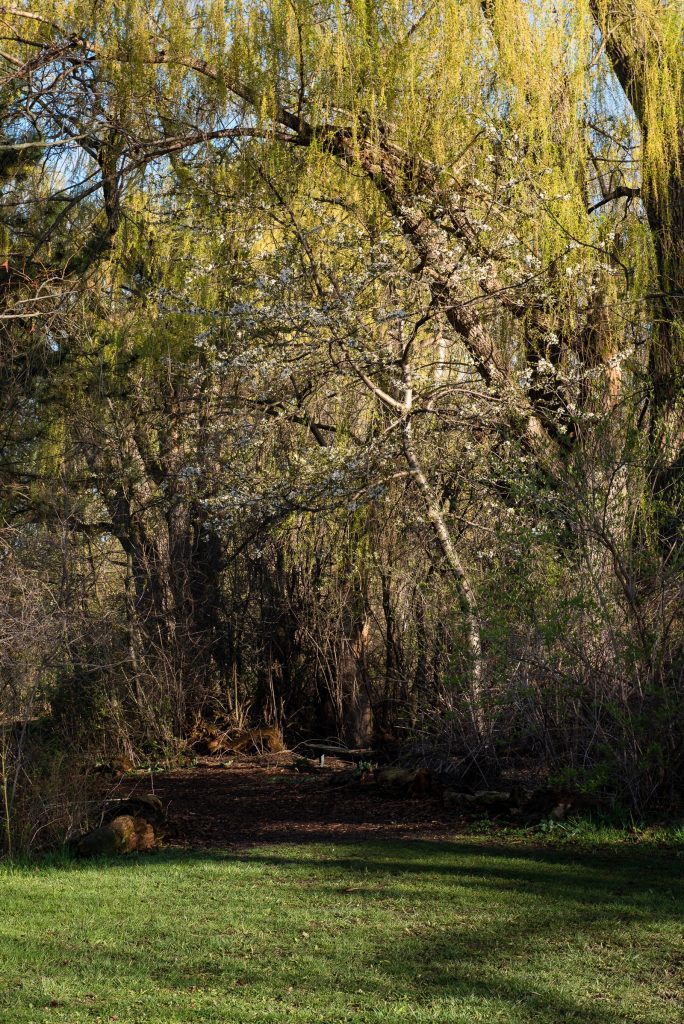
ONE GRAY MORNING, on one of his walks, Ibrahim pauses to contemplate a pair of weeping willows drooping over a mulch-strewn path, pale green buds beginning to form on their branches. He takes a picture.
Another morning, heading toward the doors after a night shift, Ibrahim drops his N95 mask into a brown paper bag with his name written on it in red Sharpie and pins it to a corkboard with a thumbtack. While he is at home, someone will sterilize the fit-tested mask so he can wear it again on another shift. Then he climbs the stairs to the top level of one of the hospital’s parking garages. Dawn is about to break, and the songbirds in the Arboretum greet the coming day with a wild mix of trills, chirps, and whistles.
He will call his parents later in the day. For the past two years, he has called them every day. He imagines them now: his father, a retired engineering professor, sitting at his desk studying. After Victor’s death, Mounir came out of retirement to become a substance abuse counselor and has thrown himself into the work with the same determination that Ibrahim admired in Victor and now recognizes, and accepts, in himself.
Up in Victor’s room, where the window looks out on the front lawn and the driveway, he imagines his mother, a retired cognitive behavioral therapist, relaxing by doing a paint-by-number or trying to follow along with Bob Ross. He wonders if anyone has cut the grass. Someday soon, he hopes, he will be able to drive to Cleveland to do it for them.
Lately, he has been thinking of the eulogy he gave for Victor nearly two years ago. It starts like this: “For as sad and heartbroken as we all are, all I can think of is wanting to thank you and tell you how lucky I was to be your little brother.” Tasked with distilling the architecture of Victor’s character into a few essential words on the day of his brother’s funeral, Ibrahim chose “humility and courage,” “gratitude and service”—words that have come to define him, too. “You lived a full life that has, and will continue, to make us better,” Ibrahim said that day.
Out from under the shadow that fell across his path after Victor’s death, Ibrahim looks over the ledge of the garage toward the horizon as the orange glow of an April sunrise unfurls above the leafless canopies of oak, maple, gum, and cottonwood trees.
Silhouetted against a fogbank over the Huron, the naked treetops resemble the vasculature of giant, inverted lungs. In all of his many visits to national parks, Ibrahim has never seen anything so majestic. He takes another picture. When the dread presses in, and there is no time to walk, he will study these photographs, channeling the calm that he feels in the presence of natural beauty—a calm that feels like strength.

